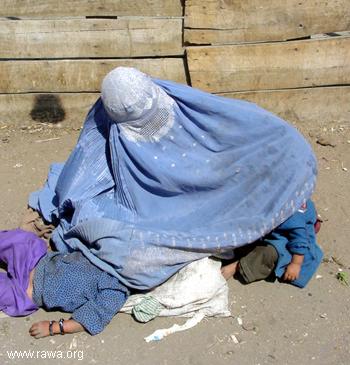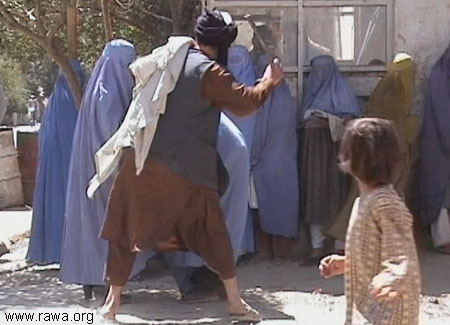
Freedom Square, Budapest, Hungary
Posted on 06/24/2007 9:53:18 PM PDT by Coleus
Schoolboys in my native Hungary used to recite an old ditty. It conjured up emotions ossified in the seams of time.
 |
|
The Kings of Hungary
Freedom Square, Budapest, Hungary |
Stork, stork, ciconia,
What makes your foot bleed?
A Turkish lad is slashing it
A Magyar lad is mending it
With a fife, a drum and a fiddle of reed.
The wounded stork’s song was a fragment of tribal memory bobbing to the surface from the collective unconscious of a great historical hurt. It was a bitter lay, a denunciation of the Ottoman Empire, the Xanadu of imperial Islam. The Turks had occupied Hungary for six generations. Although the 150 years of Turkish rule occurred during the 16th and 17th centuries, the Magyars never quite got over it. The national bird’s lament was a manifestation of recollected trauma, but as the words cast a spell of their own, on the playground we repeated them oblivious to their overtones of ethnic and civilizational hostility. Apart from the puzzle of how to mend a bleeding foot with musical instruments, we were enticed by the alliteration of the first line. It rendered the Latin word for stork—ciconia—as gilice in Hungarian, to harmonize with the Hungarian word for stork—gólya—and made the first line go: Gólya, gólya, gilice. Mournfully pronounced as goh-yah, goh-yah, ghi-lih-tzeh, the words burrowed into our minds. The fiddle of reed (no one knew what a fiddle of reed was, but it sounded magical) was icing on the cake.
The melodious ditty would be viewed as offensive to “diversity” today. We meant to give no offence to anyone—none of us had ever seen a Turkish lad—but we did associate the song with what we had been told about the Turkish occupation of Hungary—the Turkish hódoltság or bondage, as we invariably referred to it, just as Palestinians refer to the creation of Israel as nakba, or catastrophe. Being in thrall to the Turk meant being in thrall to Islam. This was worse than being in thrall to the German—Hungary’s other great historical trauma—for Germans were at least kin in Christ, while Turks were Muslims.
|
Having made the mistake of settling in a bad geopolitical neighborhood, the Magyars would come to see themselves as defenders of the West, to which they did not belong, against the East, to which they did. |
Christianity’s roots in Hungary were not very deep, but they did go back to the 9th century (with pagan revolts extending into the 11th). The Magyars, a coalition of seven tribes of nomadic horsemen from Siberia, kept riding west until they emerged from familiar Asia and found themselves in alien Europe. This happened shortly before the end of the first millennium. The Magyar chieftains concluded that they had no choice but to adopt Christianity and settle in the fertile lands along both banks of the river Danube, in a region the Romans had called Pannonia. The chieftains did not realize that they had picked a natural conflict zone. They pitched their tents in the borderlands between civilizations. Buda Castle was still a long way from being built in 895 AD, but the grey Danube (it was never blue) roiling at the foot of the future seat of Hungary’s kings was the last in a series of moats between East and West, Asia and Europe, paganism and monotheism. In due course, it became a moat between Islam and Christendom.
Having made the mistake of settling in a bad geopolitical neighbourhood, the Magyars would come to see themselves as defenders of the West, to which they did not belong, against the East, to which they did. This resulted in Hungarians having a love-hate relationship with both the East and the West for the next thousand years. “East” meant Mongolian and Tartar marauders at first, but the expansion of the Ottoman Empire during the 15th century gradually changed its meaning to include Islam. The crescent moon became a symbol of menace, as the Muslim world made up for the ground it lost in southwestern Europe by its conquests in the southeast. By victories such as Kosovo, the Prophet’s armies gained in the Balkans what they forfeited in Spain. Eventually their success saw them sweep across the great plains of Hungary and Transdanubia, their high tide reaching the walls of Vienna on two occasions, the last time in 1683. The Magyars resisted Islam’s advance for nearly a century, but eventually they succumbed at Mohács Field in 1526. After that debacle, Hungary’s 150 years of bondage began. Ottoman rule was not unmitigated evil—for instance, horticulture and architecture flourished under it—but it was still a nightmare of caprice and corruption. The Sultan’s soldiers were fatalistic in combat and merciless in victory. The Porta—the Turkish court—combined dizzying hauteur with abject servility. It also combined, along with its entire culture, Oriental cruelty with Muslim self-righteousness. Most measures were considered justified against the giaours (infidels). The trauma of imperial Islam lingers in the lower Danube basin to this day.
I am offering this potted history of the region because my reader is likely to be the product of what I have called “the 60-year gap.” Assuming that he or she was born after 1918 (the year General Allenby rode through the gates of Damascus) but before 1979 (when the Ayatollah Khomeini deposed the Shah of Iran and the mujahedeen began resisting the Soviet Union in Afghanistan), my reader belongs to the only about three generations in 1,400 years during which the struggle between the Islamic and non-Islamic world was on standby. This 60-year gap between the collapse of the Ottoman Empire and the resurgence of militant Islam was one of the few periods in which people, as long as they lived in certain sheltered parts of the world, such as Western Europe and North America, could be blissfully unaware that theirs was at war with another. Even this 60-year gap was a matter of perception rather than reality. The struggle never abated. Pakistan and India conducted full-scale engagements, as did Israel and the so called rejectionist Arab states surrounding it. Still, in the Western perception—and in the Arab perception as well to some extent—the struggle in those years was between the forces of Arab “national liberation” and Western “imperialism” rather than between the armies of the Prophet and those of the infidels.
|
This 60-year gap between the collapse of the Ottoman Empire and the resurgence of militant Islam was one of the few periods in which people, as long as they lived in certain sheltered parts of the world, such as Western Europe and North America, could be blissfully unaware that theirs was at war with another. |
The illusion of a gap in the ancient struggle lasted three generations and had certain consequences. One was that when the smouldering fire of Islam’s jihad erupted again in 1979, it caught many, if not most, Westerners by surprise. The 14-century-old conflagration was burning brightly, with American hostages being paraded in Tehran, but many people took another 22 years to notice the flames. Millions did, finally, on a picture-perfect September morning in 2001, though others denied seeing the fire even then.
Some still deny it.
Having grown up in the land of the bloodied stork, I saw 9/11 from a different perspective. A “Turkish lad” slashing a bird’s foot was not totally unfamiliar to me. Though I had no sympathy for wanton rage, coming from the East I could understand how it might arise more easily than Westerners. Irrationality was as irritating to me as to any other creature of a Cartesian culture, but as a native of the Danube basin, I found it less puzzling. I could also entertain the politically incorrect notion that we might be at war, not just with “terrorism” in general, but with the specific terrorism of Islam.
Perhaps Muslim resentment and rage should not have come as a surprise to anyone. Western ascendancy had been rubbing salt into the wounds of Islamic decline for centuries. As the Princeton scholar Bernard Lewis observed in 1990:
“For a long time now there has been a rising tide of rebellion against this Western paramountcy, and a desire to reassert Muslim values and restore Muslim greatness. The Muslim has suffered successive stages of defeat. The first was his loss of domination in the world, to the advancing power of Russia and the West. The second was the undermining of his authority in his own country, through an invasion of foreign ideas and laws and ways of life and sometimes even foreign rulers or settlers, and the enfranchisement of native non-Muslim elements. The third—the last straw—was the challenge to his mastery in his own house, from emancipated women and rebellious children. It was too much to endure, and the outbreak of rage against these alien, infidel and incomprehensible forces that had subverted his dominance, disrupted his society and finally violated the sanctuary of his home was inevitable. It was also natural that this rage should be directed primarily against the millennial enemy and should draw its strength from ancient beliefs and loyalties.”
For radical Islam, this millennial enemy was not only America or Israel, but the entire “House of War,” the world of non-Islamic beliefs and values in general, and Western beliefs and values in particular. The countries of Europe could not exempt themselves from this jihadist view by conciliatory gestures. Neither could Canada.
Stork, stork, ciconia,
What makes your foot bleed?
The answer had slammed into the Twin Towers on the morning of Sept 11, 2001.
George Jonas. "The 1,400 year-war." excerpted from Reflections on Islam: Ideas, Opinions, Arguments (Toronto, Ontario: Key Porter Books), 245-251. George Jonas is a Canadian journalist, who has also written novels, plays, and poetry. Critics have called him "...one of the very best writers of English in the country" (I. M. Owen in Books in Canada). George Jonas frequently writes about topics related to the Middle East, counter-terrorism, law, and aviation safety. He is the author of Reflections on Islam, Beethoven's Mask: Notes On My Life and Times, Vengeance: The True Story of an Israeli Counter-Terrorist Team, and others. His website is here. George Jonas
.
good article
Fascinating!!!
What an interesting read! Thanks for posting.
Only wish he could have told us what a fiddle of reed is.
Women and children are the most vulnerable and easiest to dominate and punish. A woman subjugated is likely to be the only victory and success a Muslim is to experience in life.




Hm...
The 1,400 Year War
http://www.freerepublic.com/focus/f-news/1850038/posts
The 1,400-year war: (2nd excerpt from George Jonas’ “Reflections on Islam”)
http://www.freerepublic.com/focus/f-news/1801885/posts
Most interesting .... thanks
It might be possible to rid the planet of I-slam simply by providing every woman of marriageable age in the slammite world with a 9mm automatic pistol and 100 rounds of hollow-point ammo. Total cost would be under a hundred billion.
Thanks, very interesting perspective from a culture on the front lines (and I don’t mean Canada).
Disclaimer: Opinions posted on Free Republic are those of the individual posters and do not necessarily represent the opinion of Free Republic or its management. All materials posted herein are protected by copyright law and the exemption for fair use of copyrighted works.